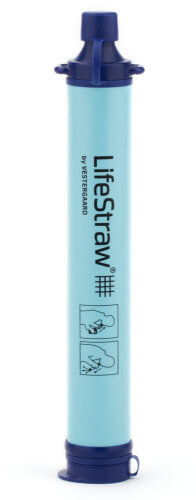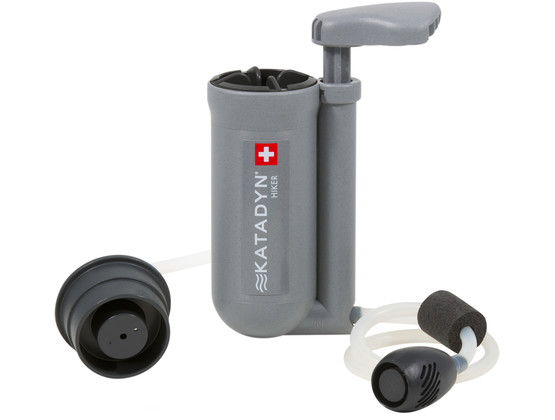
Influencer II
This section of the Overland Bootcamp is dedicated to rations in the event you have a breakdown or other issue that leaves you stranded.

Water:
Obviously water is important. This should be #1 on your list of emergency rations since you cannot survive without it. Two gallons per person per day is a minimum. A lot of articles will advises 1 gallon per person, per day. Think about it, if you want to wash your hands, dishes, or even brush your teeth will 1 gallon be enough? I guess if you are OK with being a little dirty while you wait for help 1 gallon will suffice. I just prefer to keep 2 gallons per person. I keep a 5-gallon Jerry can in my vehicle (When on trips) that is intended and designed for water ONLY. Do not use gasoline type jerry cans for water. At all times I keep a case of water in both vehicles, and it is strongly recommended to keep that or more.
Here is a link that will give you more info on water needed for emergencies: http://www.ready.gov/water
Water Filters:
There are going to be places where water cannot be found to filter, but better to have it anyway. We use the Lifestraw and keep numerous of them both in our vehicles and also in our GHB’s. There are many options out there and a quick Google search will land many articles detailing the best of filters you can get. I also use a Katadyn pump type filter. Filters are also essential. Keep in mind that both water and filters have a shelf life and should be inspected periodically for quality.
Here is a great article about water filters, why they are needed, and brand comparisons. It is geared towards helping you decide what kind of filter would be most useful. http://www.outdoorgearlab.com/Backpacking-Water-Filter-Reviews/Buying-Advice
Food rations:
This can be a difficult one. You have to decide what food fits your needs. Family size and eating preferences affect this. My kids refuse to eat MRE’s and for good reason, most of them taste horrible…the last thing you want to do is pack a bunch of junk no one wants to eat..personally I’d rather starve to death than eat a can of Spaghetti-O’s, but my kids love them so I pack them. Another thing to consider is weight. In the event you have to ditch your ride and hoof it, the less weight the better. Canned good are heavy which is not ideal, but if you can stay with your rig they are acceptable. Ounces=pounds, pounds=pain. Keep it as simple and light as possible. Make sure periodically to check the contents of your food pack and make sure none is expired or has become unusable due to moisture, package defects, or other issues. You don’t want to be in an emergency situation and go to your food to find it non-edible.
Another food-type item to consider is energy bars, there are numerous different ones out there, some are geared for shelf life and will last years, but they taste horrible....i suggest tasting a few different brand and keep some with your food rations on your trips. Try to avoid chocolate in hot climates, it will melt and be a huge mess. @hardtrailz made a valid point, jerky, dehydrated foods (such as Wise or Mountain House) are excellent light-weight choices.
Food Prep Considerations
When selecting your foods also take into consideration how you will prepare them. It is a good idea to have a mix of foods that are able to be eaten with no cooking. Ramen noodles for example, they are light and convenient, but require boiling water. Where jerky, MRE's or energy bars are ready to eat. Just a little tid-bit to think about while selecting your emergency food rations.
I strongly suggest reading some of the attached articles. They will give you plenty of more in-depth insight to food storage and selection.
http://readynutrition.com/resources/the-10-rules-for-your-emergency-food-pantry_26012012/
Info on the Lifestraw can be found here

Info on the Katadyn water filters can be found here

Info on Mountain House foods can be found here

And these can be found at your local grocery store....for those interested.

Just as something else to read I will list what i keep in my vehicle for emergencies listed below along with websites explaining uses and such.
The following links are info on the contents of my emergency pack and why they are important:
Fire Starter
Maps
Compass
Knife
Documents
Defensive tool

Water:
Obviously water is important. This should be #1 on your list of emergency rations since you cannot survive without it. Two gallons per person per day is a minimum. A lot of articles will advises 1 gallon per person, per day. Think about it, if you want to wash your hands, dishes, or even brush your teeth will 1 gallon be enough? I guess if you are OK with being a little dirty while you wait for help 1 gallon will suffice. I just prefer to keep 2 gallons per person. I keep a 5-gallon Jerry can in my vehicle (When on trips) that is intended and designed for water ONLY. Do not use gasoline type jerry cans for water. At all times I keep a case of water in both vehicles, and it is strongly recommended to keep that or more.
Here is a link that will give you more info on water needed for emergencies: http://www.ready.gov/water
Water Filters:
There are going to be places where water cannot be found to filter, but better to have it anyway. We use the Lifestraw and keep numerous of them both in our vehicles and also in our GHB’s. There are many options out there and a quick Google search will land many articles detailing the best of filters you can get. I also use a Katadyn pump type filter. Filters are also essential. Keep in mind that both water and filters have a shelf life and should be inspected periodically for quality.
Here is a great article about water filters, why they are needed, and brand comparisons. It is geared towards helping you decide what kind of filter would be most useful. http://www.outdoorgearlab.com/Backpacking-Water-Filter-Reviews/Buying-Advice
Food rations:
This can be a difficult one. You have to decide what food fits your needs. Family size and eating preferences affect this. My kids refuse to eat MRE’s and for good reason, most of them taste horrible…the last thing you want to do is pack a bunch of junk no one wants to eat..personally I’d rather starve to death than eat a can of Spaghetti-O’s, but my kids love them so I pack them. Another thing to consider is weight. In the event you have to ditch your ride and hoof it, the less weight the better. Canned good are heavy which is not ideal, but if you can stay with your rig they are acceptable. Ounces=pounds, pounds=pain. Keep it as simple and light as possible. Make sure periodically to check the contents of your food pack and make sure none is expired or has become unusable due to moisture, package defects, or other issues. You don’t want to be in an emergency situation and go to your food to find it non-edible.
Another food-type item to consider is energy bars, there are numerous different ones out there, some are geared for shelf life and will last years, but they taste horrible....i suggest tasting a few different brand and keep some with your food rations on your trips. Try to avoid chocolate in hot climates, it will melt and be a huge mess. @hardtrailz made a valid point, jerky, dehydrated foods (such as Wise or Mountain House) are excellent light-weight choices.
Food Prep Considerations
When selecting your foods also take into consideration how you will prepare them. It is a good idea to have a mix of foods that are able to be eaten with no cooking. Ramen noodles for example, they are light and convenient, but require boiling water. Where jerky, MRE's or energy bars are ready to eat. Just a little tid-bit to think about while selecting your emergency food rations.
I strongly suggest reading some of the attached articles. They will give you plenty of more in-depth insight to food storage and selection.
http://readynutrition.com/resources/the-10-rules-for-your-emergency-food-pantry_26012012/
Info on the Lifestraw can be found here

Info on the Katadyn water filters can be found here

Info on Mountain House foods can be found here

And these can be found at your local grocery store....for those interested.

Just as something else to read I will list what i keep in my vehicle for emergencies listed below along with websites explaining uses and such.
The following links are info on the contents of my emergency pack and why they are important:
Fire Starter
Maps
Compass
Knife
Documents
Defensive tool
Last edited:





